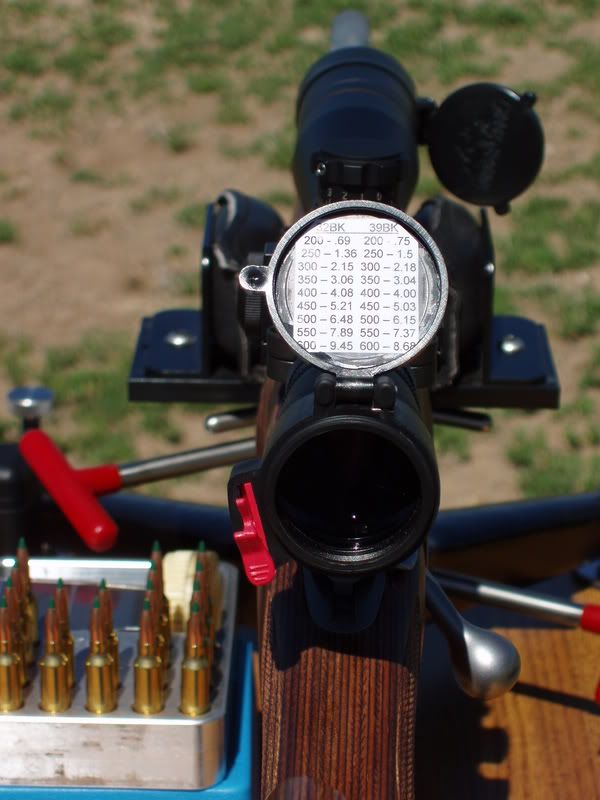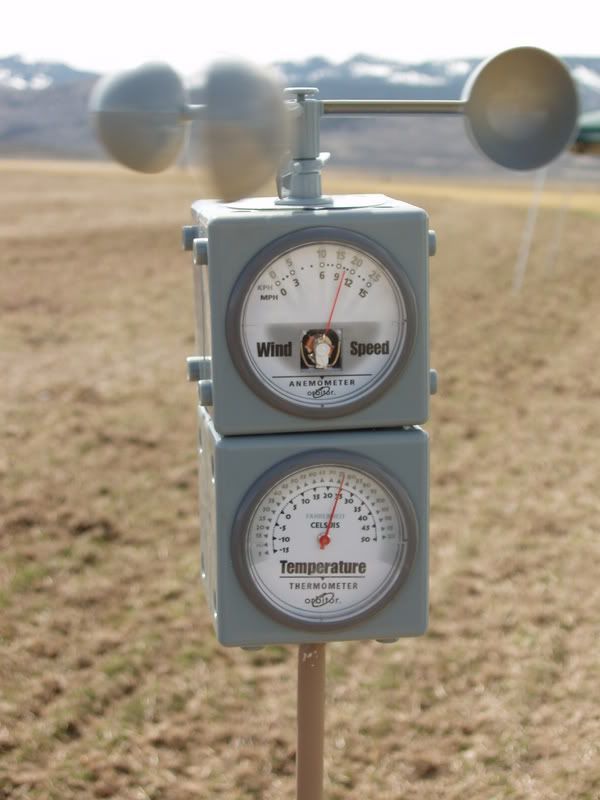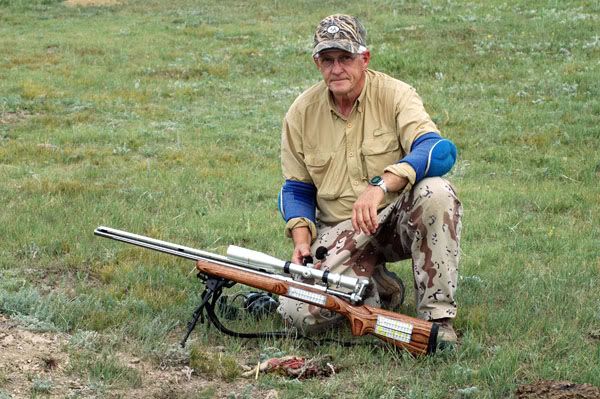Page 2 of 3
Posted: Thu Apr 12, 2007 7:05 am
by skb2706
makes a sound just like slappin a piece of wet leather.............
Posted: Thu Apr 12, 2007 2:24 pm
by Bad Dad
Holly cow that's a cool looking scope.
Posted: Thu Apr 12, 2007 2:36 pm
by Rick in Oregon
Bad Dad: You can have one too, for just a shade over two grand!

How many would you like to order?

(I might be able to afford one if my rancher buddies would start paying me about a buck per sage rat I eliminate from their alfalfa......after a couple of seasons that is.....

)
Configure your own scope on www.usoptics.org
Posted: Thu Apr 12, 2007 6:12 pm
by Critter
Bad Dad: Yes USO scopes are not cheap. However, if you look at your gun safe, wouldn't you give something to have a little more room in that sucker?
So instead of twelve rifles, you only need six. Other than a few odds and zodds collected over the years by accident, that is exactly how many I have.
Further, USO scopes get expensive because one tends to add special features that make life interesting, but that aren't really required to get the job done. For example lets look at two configurations and pricing and compare these two in a hypothetical example. Remember for a top of the line "domestic" scope you can easily pay $1500 or so list:
Configuration 1: Basic 17X Variable SN3-1700 : $1936
Base price $1850
ERGO - Standard - Standard Option
PCMOA Scale - 86.00
Configuration 2: Loaded 17X Variable $2660
SN3-1700
Base price $1850
ERGO - Standard - Standard Option
44mm Low Profile - Standard Option
30mm - Standard Option
Ceracoat - Specify Color - 160.00
US#3 M40 Metric Windage- Standard Option
US#1 M40 Metric Elevation - $20.00
Horus H-25 - 400.00
Lit Reticle w/Digital Push Button - 185.00
Lo Profile Housing - Standard Option
This isn't all the option either 35mm tube, 58mm objectives are just a few of those options not looked at yet.
Posted: Thu Apr 12, 2007 6:25 pm
by Critter
Rick in Oregon wrote: I might be able to afford one if my rancher buddies would start paying me about a buck per sage rat I eliminate from their alfalfa......after a couple of seasons that is.....

Rick in Oregon: Now that is funny. Never happen. Your Leupy buddies would never talk to you again.
They would barely talk to me. (Didn't mind though, thought it was very interesting.) To think that guy told me that Leupy builds the best optics on the planet after shooting down my Leica BRFs as not having enough adjustment!
Nice guys though, enjoyed that shoot tremendously. Looking forward to next one if another hole develops in the line up.

-
Posted: Fri Apr 13, 2007 6:17 am
by Rick in Oregon
Yep, both Lupy's and USO are expensive, no doubt about it, and quality always cost more than 'average'. But to hit distant targets with any degree of regularity, good optics are a must.
See the distant horizon in the below photo? A cheapie $99 scope won't even let you see a sage rat at 400 - 600 yards, much less have the ability to actually dial up to hit him. (The telephone pole on the far right, barely visiable in the photo is where my 465 yard rat was terminated using my chart)

Not necessarily the best method in the world for ranging/hitting distant targets, but foregoing a FO, or AWAC circling above for you, or spending four times as much as your rifle cost, these 'come-up' charts do the trick for making repeatable, reliable hits farther out than you'd realize.

Like Dave says though, if you really want to make a one shot hit without any fuss or external devices, then you must pony up and take the hit in the wallet. $=

It's the old adage: "You get what you pay for". There's more cliche's to the same end, but you get the idea.
Posted: Fri Apr 13, 2007 7:51 am
by Ray P
Range tables...........Rick love your scope covers charts.........real neat. Those vales are in inches..........yes? When we hunted Wyoming, my shooting table and a black Sharpie marker were very close. I had values for my 7 STW and my 300 Imp. from 500 yrds to 1000 yrds and it worked for the hole week. Got love those leupolds scopes, one turn of the turet and you got 15". I graduated up to 30mm tubes and a 1000 yards is no problem. Now the wind...........thats a hole other story.
Thanks for sharing.
Later
Ray P

Posted: Sat Apr 14, 2007 10:00 am
by Rick in Oregon
Ray: Those values are actually MOA. In other words, the rifle is zero'd at 100 yards. To be dead-on at the ranges indicated, the elevation turret is dialed to the value shown on the chart, and will be then dead-on at the range indicated.
The actual drop in inches would be much more, much easier and more accurate to use a ballistics program, set the zero range for every range you intend to shoot out to, zero the load at that range, then look and see what the 'come-up' is at 100 yards at each of the extended ranges. That number is the one on the chart. To acquire a distant target, laser the range, check the chart, dial up, takes about 3 to 5 seconds once you're used to it. Long range hits are completely reasonable once you get the hang of it. Skippy doesn't stand upright or still for long, so we get pretty used to the drill, and become proficient at it, or you spend all day just looking for targets and watching them duck back down.
And 'yeah',
that wind! I use hand-held Kestrals, wind flags, and a cool new device engineered and made by Captian QC shown below to keep track of temp and actual wind speed at the bench.

Hold dead-on for elevation once you're dialed up, then just hold off an amount you deem perfect based on what the "Wind-O-Matic" tells you. Much easier than it sounds.

Posted: Sun Apr 15, 2007 10:27 am
by Squatting Wolf
Rick - I've got what is probably a very basic question for you, sorry for my ignorance!
Here's my example:
Using the PointBlank ballistics software, I've set it up for a target distance of 250 yards. So would my 100 yard "come up" be the 1.65 inches? If so I would continue this process for each of my extended ranges?
Range Elevation Velocity
0 yds -1.50 in 3800 fps
25 yds -0.46 in 3667 fps
50 yds 0.42 in 3539 fps
75 yds 1.13 in 3414 fps
100 yds 1.65 in 3294 fps
125 yds 1.97 in 3176 fps
150 yds 2.08 in 3062 fps
175 yds 1.96 in 2951 fps
200 yds 1.59 in 2842 fps
225 yds 0.94 in 2736 fps
250 yds 0.00 in 2633 fps
275 yds -1.24 in 2532 fps
300 yds -2.81 in 2433 fps
325 yds -4.76 in 2337 fps
350 yds -7.13 in 2242 fps
375 yds -9.93 in 2150 fps
400 yds -13.19 in 2060 fps
425 yds -16.95 in 1972 fps
450 yds -21.23 in 1886 fps
475 yds -26.22 in 1803 fps
500 yds -31.96 in 1723 fps
525 yds -38.46 in 1646 fps
550 yds -45.71 in 1572 fps
575 yds -53.86 in 1500 fps
600 yds -62.97 in 1431 fps
625 yds -73.37 in 1368 fps
650 yds -85.01 in 1309 fps
Thanks!
Posted: Sun Apr 15, 2007 11:24 am
by Rick in Oregon
SW: No, for the system to work, you must have a 100 yard zero to use as your reference point. Then, you do a temp "zero" at every yardage out to 600 or whatever, then check what the 'come-up' is at 100 yards for every range.
This is the only way it will work. Recap: 100 yard zero for reference, set your scope dials to "zero". Run out your new fake "zero" ranges at every 50 yard increments to say, 600 yards using the ballistics program, and at each fake "zero", mark down the "come-up" at 100 yards shown on the program in order to determine where to dial the elevation turret at each of those distances to be dead-on at that range. In other words, if shooting out to 500 yards, the zero on your turret is 100 yards, so how high would you have to be at 100 yards in order to be dead on at 500? That is the number to dial to.
Having any other zero other than 100 will not work for this system to work properly.
All you are doing is noting the come-ups at each long range zero at the 100 yard mark on the program. Look at my chart above, and you'll see what I mean.
Posted: Sun Apr 15, 2007 1:39 pm
by Silverfox
Very interesting to read about the way you fellows adjust for various distance shots. For colony rodent shooting, I make liberal use of my Leica 1200 range finder and then check out the drop for my bullet at that yardage on the trajectory and wind deflection chart I have taped to the side of my stock. My method takes some degree of guesswork to estimate how high you are holding to make those long shots, but it has been working quite well for me for quite a number of years. Here's one of my charts for the 35 gr. FB HP Berger for the first 250 yards:

The chart for 275 yards on out to 500 yards:

Since I sometimes use three different bullets in my Savage 12VLP for prairie doggin', I sometimes have three charts taped to the side of my stock!!! Here's a view of the charts on my stock from a PD outing my son and I were on July 2, 2006.

The prairie dog (or should I say what's left of him) was shot with a 40 gr. Nosler BT from about 150 yards away. Real "red mist time" on the prairie.
Posted: Sun Apr 15, 2007 2:25 pm
by majcl5
Has anyone tried a bullet drop compensator dail. I am going to check out if i can get one for my .300 win mag i have a bushnell elite scope on my big game rifle. Leopold will install them on your scope for about $100 and the you just dail to the yardage and shoot, no guess work. If you have a range finder of course.
Posted: Mon Apr 16, 2007 7:27 pm
by Squatting Wolf
Rick - Thanks for the clarification and help. I am looking to have Leupold add a BDC to my scope at some point but until that happens I thought I could make one of your niffy little charts.
Posted: Thu May 03, 2007 5:50 pm
by skunkriver
Check out the following website for aid in making "come-up" charts. Choose 100 yds. as your zero and all the MOA's are listed accordingly. Choose your bullet from the chart and know your velocity, you can even adjust PBR for Skippy's little body.
http://www.eskimo.com/~jbm/ballistics/traj/traj.html
Posted: Thu May 03, 2007 11:08 pm
by Robert harrel
i have been tapeing my drop charts to my ammo box figured with chrony info and yardage moa from the rifle it is loaded for








